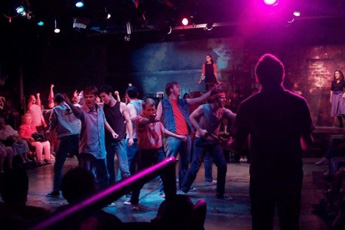

The theater was the Hurst-Belaire shopping center’s beacon of light salvaging the theater and proved that this location could provide decades of entertainment for the area. In 2013, the Artisan signed a five-year extension which would take the theater past its 50th anniversary. In 2005, the live theater group took over the Belaire knocking down the wall between screens three and four while using houses one and two for rehearsals and workshops.

However, at least one group would come calling.Įmpty for four years and with a very uncertain future, the Artisan Center operating in the faded North Hills Mall was looking for a new home. When the doors locked for the last time, few seemed to take notice. The theater appears to have had a 20-year lease honored followed by, perhaps, a 15-year lease where it closed as a decrepit, seedy independent dollar house in a shopping center that had neither been updated nor had many retailers remaining when the theater closed in December of 2001. It was quadplexed into four auditoriums and became a sub-run dollar house. The theater opened Apwith “That Darn Cat” a day after an invitation-only screening of “The Trouble with Angels” the night before. It was part of Interstate Theaters $4 million expansion with nine theaters including the Westwood in Richardson, South Fort Worth’s Wedgewood, the Westwood in Abilene, and Pasadena’s Parkview Theater. The $350,000 theater had 70mm projection with 6-channel stereo sound and parking for mre than 700 cars.

The theater was housed in the Hurst-Belaire Shopping Center which, itself, opened theater-less on Jin Hurst, Texas by George P. The rows would become wider by the time it was built ending up with 860 total seats all on the main floor. The proposed 1,000 seat theater was arranged continental style with long rows instead of multiple aisles. Thompson architected Belaire Theater project was just the second new build Interstate Theatre for the Dallas-Fort Worth area since the 1949 construction of Dallas’ Forest Theatre.


 0 kommentar(er)
0 kommentar(er)
